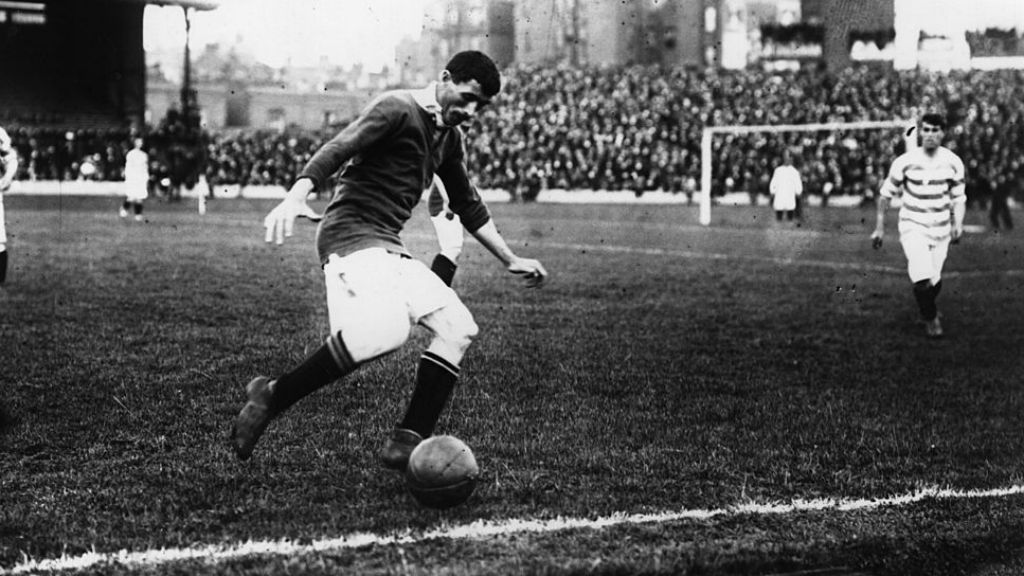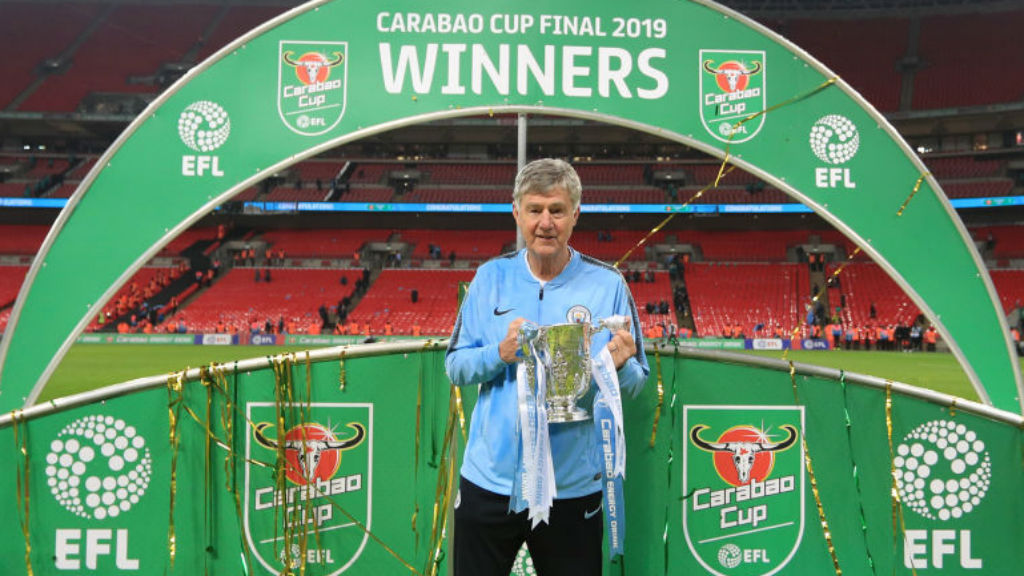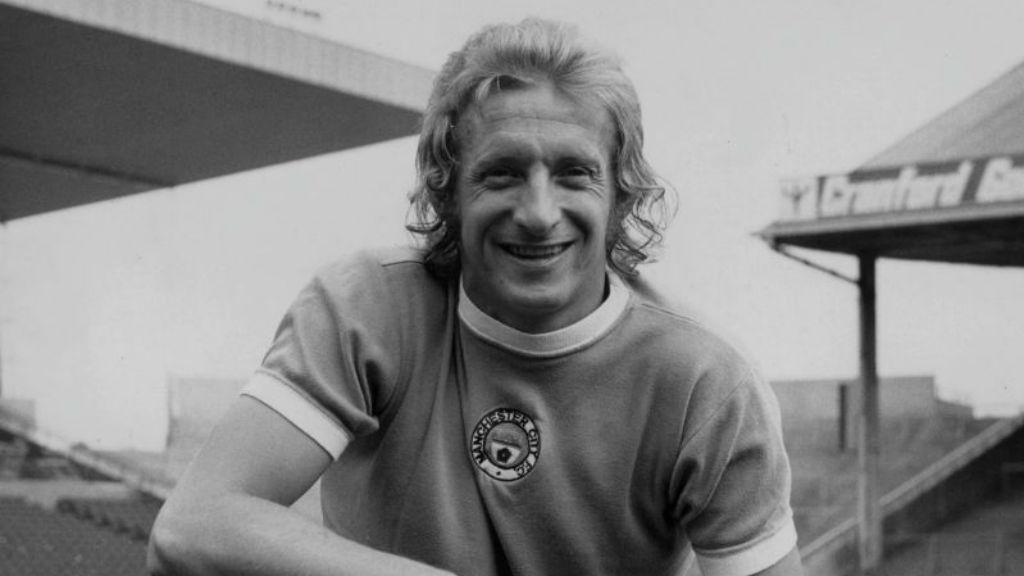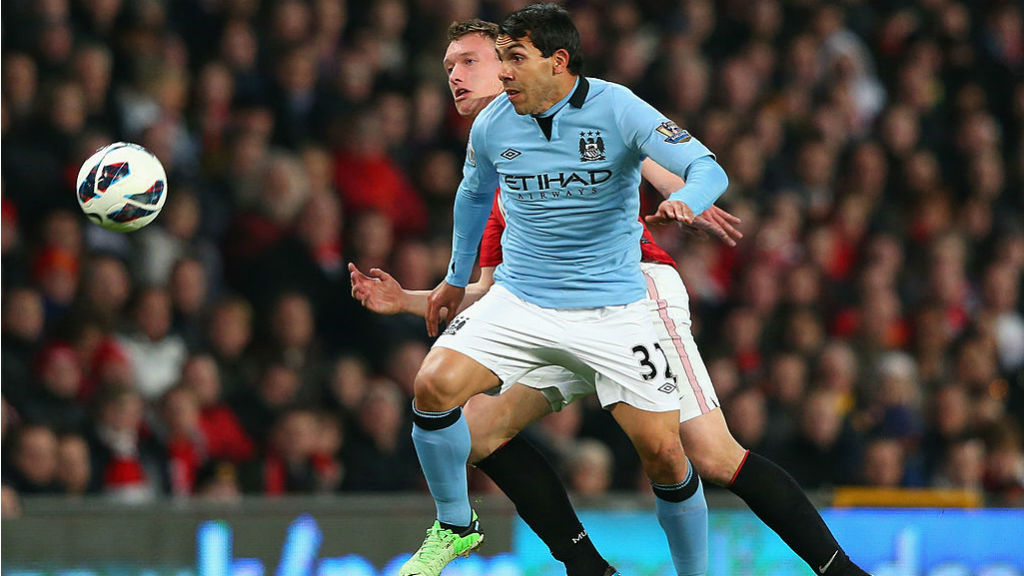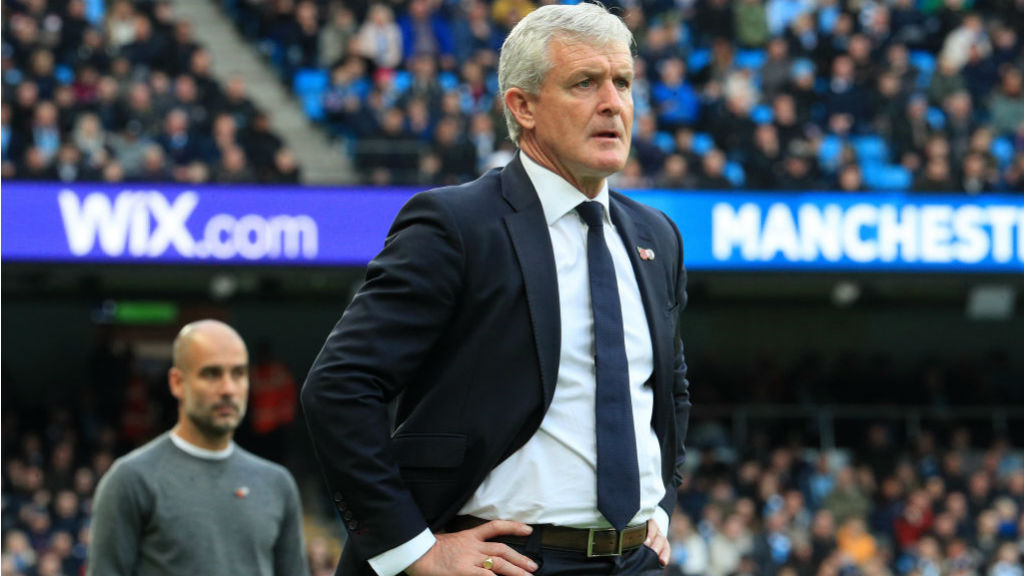Whether Blue or Red, the derby is a high-octane occasion that forges firm life-long allegiances from the get-go.
But for a select few – those players who have negotiated Manchester’s crosstown traffic and represented both City and United – it’s a more complicated, nuanced story.
Ahead of Wednesday’s Carabao Cup semi-final second leg, we look at the history behind a very exclusive group.
Pitch switch
Altogether, more than 40 players have experienced what it is to represent both City and United.
William Douglas and Bob Milarvie shared the distinction of being the first players to cross the great divide back at the tail end of the 19th century.
READ: Monday Marker: Your guide to City’s week ahead
BUY: Tickets to watch City v United in the Carabao Cup
Douglas made 36 appearances for City, in our former guise as Ardwick, between 1890 and 94 before then making the move to United for whom he played 56 times up until 1896.
Fellow Scotsman Milarvie, meanwhile, made the switch the other way around.
He started out in the Red half of Manchester in 1890, playing 22 times that season before then going on to figure 69 time for the Blues between 1891 and 1896.
The pair were to be the pioneers of a special group who have donned both the Blue and Red shirts down the years.
Amongst the most notable figures to play with City and United during the first half of the century were Billy Meredith and Sandy Turnbull.
A tough as teak former miner, Welsh international Meredith enjoyed two spells with the Blues between 1894 and 1924, becoming one of City’s first-ever signings and he initially joined as an amateur, combing playing with his occupation as a miner.
He went on to make more than 300 league appearances and netting 129 goals for the Blues and his goals helped City lift the Second Division title in the 1898/99 season as well as the FA Cup in 1904 with Meredith’s goal earning a 1-0 win over Bolton – the Club’s first major piece of silverware.
In the summer of 1906 Meredith then became the highest profile figure yet to cross the Manchester divide, when he made the move to United.
In a 15-year stay at Old Trafford – which also coincided with World War One - Meredith chalked up more than 300 appearances and was instrumental in United securing two first division titles as well as tasting FA Cup success of their own in 1909.
Another formidable forward, Scotland powerhouse Turnbull also flourished in both halves of the city.
In the course of more than 100 league appearances between 1902 and 1906, Turnbull joined Meredith in helping City to our first FA Cup success in 1904 and scored more than 50 goals in total before switching loyalties to United.
He subsequently spent nine years as a Red, winning two titles and an FA Cup as well as scoring 90 goals in more than 200 games.
However, there was to be a tragic postscript. Turnbull received a lifetime ban from football in 1915 after being found guilty of match-fixing.
He was reinstated in 1919 but that validation only came posthumously as Turnbull was killed in action at the Battle of Arras in 1917.
Fast forward to the post war era and the cross-city derby landscape is dominated by two names in particular – Brian Kidd and Denis Law – both towering figures in Manchester’s illustrious football history.
A wonderful centre-forward, Collyhurst-born Kidd first found fame with United, for whom he memorably scored on his 18th birthday in the Reds’ 1968 European Cup final win over Benfica.
Kidd – also capped twice by England - went on to play more than 200 times in the colours of United scoring 52 league goals before – after a subsequent spell with Arsenal – moving to City in the summer of 1976.
In three seasons at Maine Road, Kidd led the line with aplomb and boasted a superb goals-to-game ratio, bagging 44 goals from just 98 league appearances.
Kidd’s back-story is even more notable for the fact that initially with United but more latterly with the Blues, he has gone on to enjoy enormous success on both sides of the Manchester divide through his renowned coaching prowess.
His work at United, where he served as assistant manager under Alex Ferguson between 1991 and 1998, coincided with a period of sustained success for the Old Trafford club with Kidd also instrumental in the development of a succession of young English talent.
After returning to City in 2009, initially as technical development manager, upon the arrival of Roberto Mancini in December of that year, Kidd was appointed assistant manager and since then his vast knowledge and expertise have been utilized to the full in what has proved to be the most successful period in the Club’s history.
Scottish icon Law meanwhile was another whose time with United was book-ended by separate spells at Maine Road.
He first joined City as a Club record £55,000 signing in 1960 and famously scored six goals in an FA Cup tie with Luton that was subsequently abandoned before moving on after a season to Italian side Torino and subsequently Old Trafford.
He was to spend a hugely successful 11 years at United – netting more than 200 goals from over 400 appearances, though injury meant he didn’t figure in United’s 1968 European Cup triumph.
Law’s story then came full circle as he returned to City in the summer of 1973 for what was to prove the final season of his career, helping City reach the 1974 League Cup final, and - most famously - scoring the back-heeled goal that helped condemn United to relegation in 1974. In total Denis made more than 75 City appearances, netting 37 times.
More recently, the likes of Peter Barnes, John Gidman, Peter Schmeichel, Andy Cole, Andrei Kanchelskis and Terry Cooke have all been amongst those to have experienced life in both the Blue and Red halves of Manchester.
But arguably the biggest impact of all was that created by Carlos Tevez when he moved from United to City in the summer of 2009.
In two seasons at Old Trafford, the Argentine forward won a plethora of silverware including two Premier League titles, the Champions League and the Club World Championship, scoring 34 times in almost 100 appearances.
His subsequent decision to move to the Etihad made headlines around the world.
It proved successful too, as Tevez – who was to make 148 appearances in Blue, scoring 73 times – was to prove one of the inspirations in City’s return to success under Roberto Mancini.
Tevez was part of the City side which ended our 35-year wait for silverware with FA Cup glory in 2011 and also played his part in our incredible first Premier League title success the following year.
Life in the dugout
Arguably the most notable names in derby history is that of Ernest Mangnall who holds the unique distinction of being the only man to have managed both City and United.
Having spent three years in charge of Burnley between 1900 and 1903, Mangnall then spent nine years at the helm with United, officially being employed as secretary as the term manager was not used back then and guided the Club to their first major silverware.
Under Mangnall’s guidance, United were to win two league titles, as well as lifting the FA Cup before he made the bold move to take over at City in September 1912.
READ: Which TV channel is City v United on?
BUY: Tickets to see City play Real Madrid in the Champions League
Ironically his last game in charge of United was against City - when he already knew he was moving across the city – with the Blues running out 1-0 winners, much to Mangnall’s delight, allegedly.
That was the prelude to a near 12-year stint as City manager between September 1912 and May 1924, though the onset of the first world war meant Mangnall only oversaw eight seasons of action.
His most successful season overseeing the Blue half of Manchester came in 1920-21 when City finished runners-up in Division One though under Mangnall City did also enjoy success in a number of wartime regional tournaments.
He also helped oversee the move from Hyde Road to Maine Road.
Another of Manchester’s iconic football figures – Sir Matt Busby – also merits special mention.
A legendary manager of United between 1945 and 1969, and the man who famously led the Reds to European Cup glory in 1969, it’s often overlooked that Busby also enjoyed a fine playing career – including an eight-year spell with City between 1928 and 1936.
In total, the Scot played more than 200 times for City and was a key part of the City side which lifted the FA Cup in 1934 as well as featuring in the side which lost at Wembley to Everton the year before.
Two notable former Reds – Steve Coppell and Mark Hughes – both made the transition from pitch to dugout with both enjoying spells in charge at City.
Coppell’s tenure though was brief affair with the former England winger only staying at the helm for 32 days before he left for health reasons. He remains the shortest-serving manager in the Club’s history.
Hughes meanwhile was to spend 18 months as a manager, his spell traversing our takeover by the Abu Dhabi United Group in August 2008 before the former Welsh international was succeeded by Mancini at the end of 2009.


